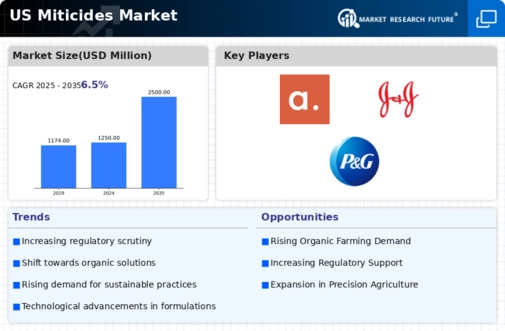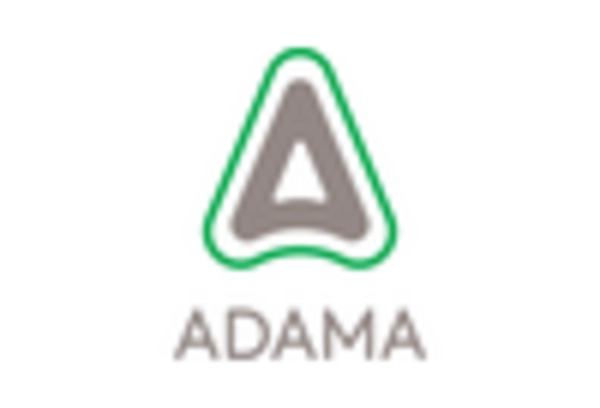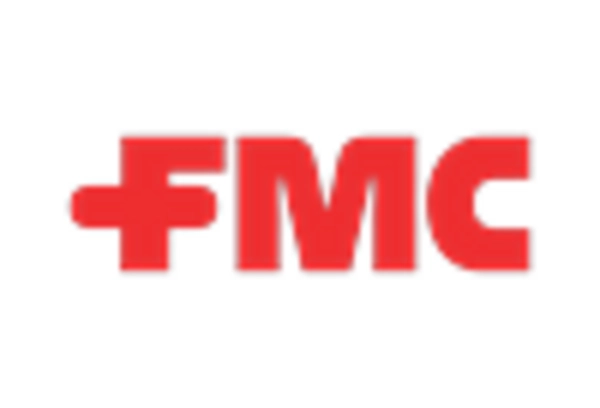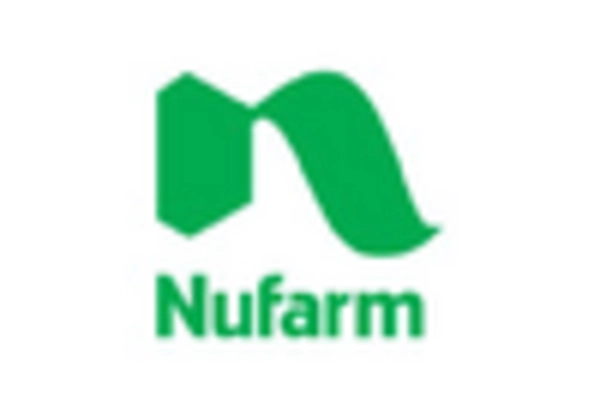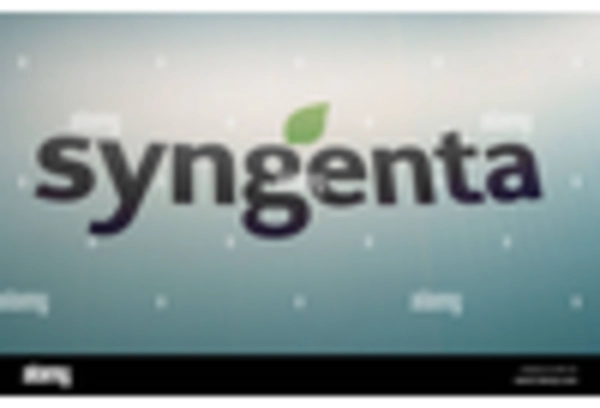The Miticides Access
The Miticides Industry. As trade agreements evolve, US manufacturers are gaining access to international markets, which can lead to increased competition and innovation within the domestic market. The ability to export miticides to countries with stringent regulatory standards encourages US companies to enhance their product formulations to meet these requirements. Additionally, the importation of foreign miticides can introduce new active ingredients and technologies to the US market. This interplay of The Miticides conditions is likely to shape the future landscape of the US Miticides Market.
Rising Demand for Organic Produce
The US Miticides Market is experiencing a notable increase in demand for organic produce. Consumers are becoming more health-conscious and are actively seeking food products that are free from synthetic chemicals. This trend is driving farmers to adopt organic farming practices, which often necessitate the use of miticides that are compliant with organic standards. According to the USDA, organic farming has seen a growth rate of approximately 12% annually, indicating a robust market for organic miticides. As a result, manufacturers are focusing on developing and marketing miticides that meet organic certification requirements, thereby expanding their product offerings in the US Miticides Market.
Government Initiatives and Support
Government initiatives aimed at promoting sustainable agriculture are positively impacting the US Miticides Market. Various federal and state programs are providing financial incentives and technical support to farmers who adopt integrated pest management practices. These initiatives encourage the use of environmentally friendly miticides, thereby fostering a more sustainable agricultural landscape. For example, the USDA's Sustainable Agriculture Research and Education program has allocated millions in grants to support research on alternative pest control methods. Such government backing not only enhances the adoption of innovative miticides but also contributes to the overall growth of the US Miticides Market.
Increased Awareness of Pest Resistance
The growing awareness of pest resistance is significantly influencing the US Miticides Market. Farmers are increasingly recognizing the challenges posed by resistant pest populations, which can lead to substantial crop losses. This awareness is prompting the adoption of more effective miticide strategies, including rotation and combination of different active ingredients to mitigate resistance development. According to recent studies, up to 30% of pest populations in certain regions have shown resistance to commonly used miticides. Consequently, the demand for novel miticides that can effectively combat resistant pests is on the rise, driving growth in the US Miticides Market.
Technological Advancements in Miticide Formulations
Technological advancements are playing a crucial role in shaping the US Miticides Market. Innovations in formulation technologies have led to the development of more effective and environmentally friendly miticides. For instance, the introduction of nano-encapsulation techniques allows for targeted delivery of active ingredients, enhancing efficacy while minimizing environmental impact. The market is projected to grow at a CAGR of 5% over the next five years, driven by these advancements. Furthermore, the integration of precision agriculture technologies is enabling farmers to apply miticides more efficiently, reducing waste and improving crop yields. This trend underscores the importance of innovation in the US Miticides Market.


